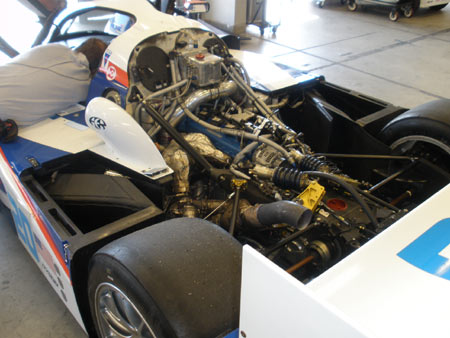Bio-butanol
Unless you have been living on the Moon for the past 40 years, the news stories about the scarcity of oil - there are always "only 25 years' worth" of it left - and global warming can't have escaped your notice. The imperative to do more work while using up less of the Earth's fossil fuels has given us ever more efficient engines for our roadcars, and racing is going the same way.
A great deal of press coverage has been given to alcohol fuels, and they are fast becoming an everyday reality: much of the gasoline commercially available now contains a small percentage of bio-ethanol. The 'bio' part is important. While bio-ethanol is produced from plant matter, it is no different in terms of composition or behaviour from synthetic ethanol produced industrially from petrochemical feedstocks. Bio-ethanol still burns to produce carbon dioxide and water, but the fuel is renewable, and the fuel crops remove carbon dioxide from the atmosphere. We are simply recycling the carbon.
However, ethanol as a fuel has some disadvantages, some of which were covered briefly in Race Engine Technology (issue 63, June/July 2102). It can be very corrosive, owing partly to contaminants, and this affects metal components, polymers and elastomers. Modern road engines are capable of running gasoline with around 10% ethanol, but pure ethanol can be a real problem.
Another problem is the energy density of the fuel and the air-to-fuel ratio. One litre of ethanol contains only 61% of the energy of one litre of gasoline. The air-fuel ratio compensates somewhat for this, as we need to add 1.6 times as much ethanol to the air, giving roughly the same power output from an engine. In fact, ethanol is slightly superior to gasoline in this respect, but we need a much larger tank to go the same distance.

Bio-butanol goes some way to making up for these disadvantages. In terms of energy per litre of liquid fuel, it is much closer to gasoline, containing 91% of the energy. The air-fuel ratio is 11.1:1 compared to 14.6:1 for gasoline. The result is that, with a stoichiometric mixture, 1 kg of air can liberate 3.2 MJ of energy from butanol, compared to 3.0 MJ for ethanol and 2.9 MJ for gasoline. Butanol is also less corrosive than ethanol, which is important if you are considering it as a race fuel. Methanol and ethanol engines often have to have their fuel systems purged with gasoline.
Bio-butanol is the subject of a lot of r&d by fuel companies, one of which is using a pair of American Le Mans Series LM P1 cars to promote its bio-butanol fuels. The Mazda-powered Dyson Lolas have been running very successfully on the fuel. Whether this is 100% bio-butanol or a blend is not known, but it is likely to be a blend, owing to the low octane number of butanol compared to ethanol and racing gasoline. The Mazda engines are turbocharged, and therefore high octane rating is important as it is a measure of the knock resistance of the fuel.
Butanol can be successfully blended with gasoline and ethanol. While E85 (gasoline with 85% ethanol) is gaining acceptance as a racing fuel, E85B is being proposed as a possible future 100% bio-fuel, with 85% ethanol and 15% butanol.
Fig. 1 - The Mazda LM P1 engines used by Dyson Racing use bio-butanol fuel
Written by Wayne Ward